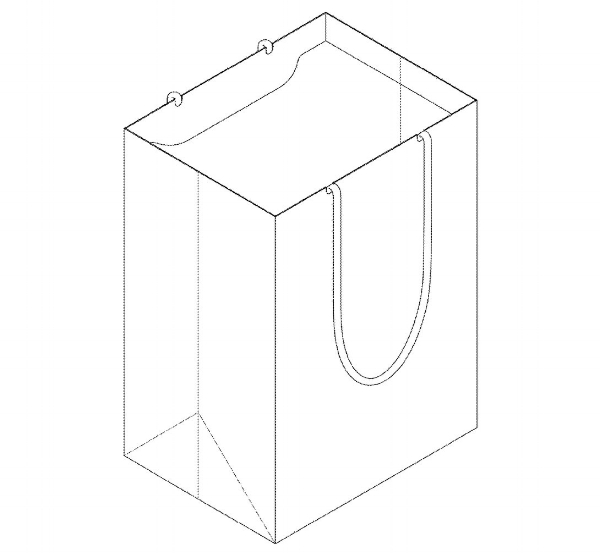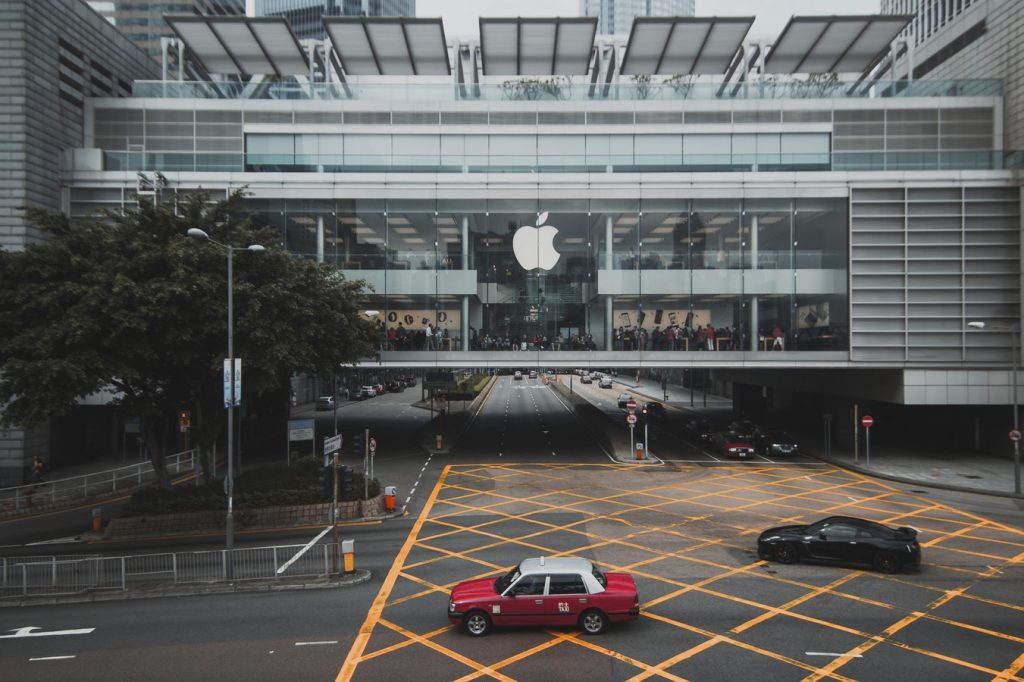Apple has added a new design patent to its portfolio of intellectual property-protected designs. Joining designs patents covering the “display screen or portion thereof with graphical user interface,” “protective cover with an audio listening system,” “ornamental design for a wearable device,” and “backplate for electronic device” is a shopping bag. A team of twenty, including Apple’s the Chief Design Officer, is credited for “inventing” the ornamental design of the bag for which Apple received design patent protection (No. D785,463) on May 2.
For the uninitiated, in order to receive a design patent – which protects the ornamental appearance of a product for 15 years – the design at issue must be “useful,” “novel,” and “non-obvious”). So, how exactly did Apple receive a patent for a plain white shopping bag, you ask?
Design patent expert and University of Oklahoma College of Law law professor Sarah Burstein says, “It is difficult to see how this design is novel, not obvious, or ornamental in any meaningful way, yet it easily satisfies the Federal Circuit’s eroded standards of design patentability.”
While the shopping bag patent might seem like an easy one for others to infringe – inadvertently or not, and thereby, a potential litigation spree waiting to happen – there is a bright side. “Courts have (quite correctly) maintained that a high degree of visual similarity is required for infringement,” according to Burstein. “And the similarity required is even greater when there is a lot of close prior art [all of the information that is publicly available before a given date that might be relevant to a patent’s originality], which is what I expect the case is here.” With that in mind, “if Apple ever asserted this in litigation, it could be really difficult to win on infringement.”

The patent is far from useless, though. Burstein notes, “It could have value to Apple as an addition to a defensive design patent arsenal or for extra-judicial enforcement efforts.” Still yet, “it might be used as a basis to claim priority in foreign applications in jurisdictions where the infringement standard is looser.”
Apple’s Existing Portfolio
Seeking design patent protection for a bag is not completely outlandish if we consider some of Apple’s existing design patents and its legal strategy to date. As Burstein told tech site GigaOm back in 2012, around the outset of the most infamous Apple v. Samsung case, design patents were traditionally limited to fields, such as furniture and lighting.
That is, until Apple began obtaining them for elements of consumer electronics. The company’s design chief Jony Ive, alone, is among those listed on nearly 2,000 Apple patents – from tables and “credenzas” to a “display screen or portion thereof with icon” and a “music user interface.”
The Cupertino-based company has expanded its arsenal of design patents far beyond the ornamental aspects of its phones and computers. In fact, Apple currently holds design patents for the ornamental design of a number of other shopping bags, tables, drawers, planters, “combined doors with room,” lighting fixtures, chairs, staircases, display structures and stands, a room, at least two buildings, and an architectural structure. That is a short list and is in addition to the vast array (think: 15,000 or so) utility patents for the actual computers and iPhones, etc.
Intellectual property lawyer Peter Toren of Weisbrod, Matteis & Copley told GigaOm, “Apple is very much a believer in using a coordinated, comprehensive intellectual property protection scheme.” This means that not only can you not legally copy the layout of the iPhone or the design of the AirPods, you also cannot legally recreate the layout of an Apple store or the design of its chairs, either. So, competitors, stay far away and be sure to design your own bags.











